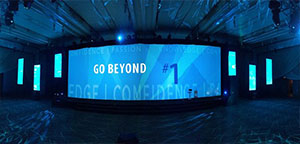
A higher quality signal resolution using a digital format for the transmission and
Reception of TV signals. (HDTV) provides about five times more picture information
(Picture elements or pixels) than conventional television, creating clarity, wider aspect ratio, and digital quality sound.
The site in a cable system or broadband coaxial network where the programming originates and the distribution network starts. Signals are usually received off the air from satellites, microwave relays, or fiber optic cables at the head end for distribution
A way to measure a user's unique identity. This measure uses deduction or inference based on a rule or algorithm which is valid for that server. For example, the combination of IP address and user agent can be used to identify a user in some cases. If a server receives a new request from the same client within 30 minutes, it is inferred that a new request comes from the same user and the time since the last page request was spent viewing the last page. Also referred to as an inference
A menu in a web browser which displays recently visited sites. The same mechanism makes it possible for servers to track where a browser was before visiting a particular site
When users’ access a Web site, their computer sends a request to the site's server to begin downloading a page. Each element of a requested page (including graphics, text, and interactive items) is recorded by the site's Web server log file as a (hit). If a page containing two graphics is accessed by a user, those (hits) will be recorded once for the page itself and once for each of the graphics. Webmasters use (hits) to measure their servers' workload. Because page designs and visit patterns vary from site to site, the number of (hits) bears no relationship to the number of pages downloaded, and is therefore a poor guide for traffic measurement.















